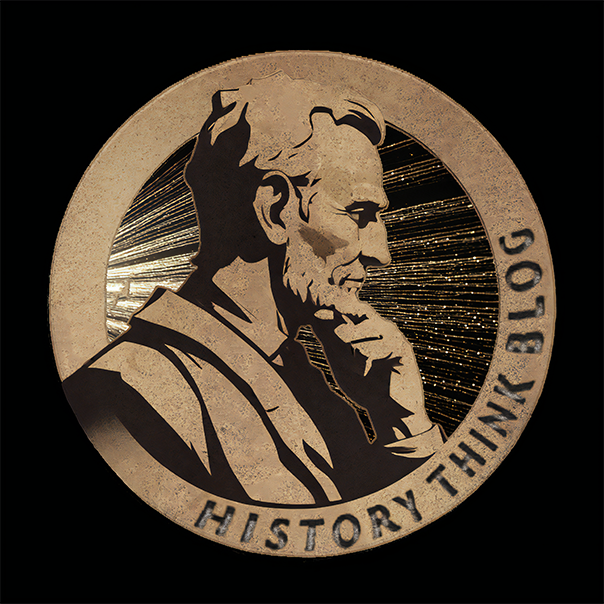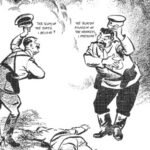The web is filled with references to the “Eisenhower” Matrix, Decision Matrix, Method, Principle, etc. Wikipedia discusses it in an article about Time management; major companies, like Microsoft, and news organizations, like Forbes, talk about it; job seeker websites, like Indeed and LinkedIn also tell you how to understand it and implement it; and there are even multiple smartphone apps that claim to help you better utilize the concept. The charts and examples used to explain it vary slightly, but the Eisenhower name, and its cachet of credibility, remain the same. On this point, however, all of these sources are wrong.
WHERE DOES IT COME FROM?
Stephen R. Covey’s wildly successful business book, The 7 Habits of Highly Effective People: Powerful Lessons in Personal Change, first published in 1989, argued that the general subject of “time management” had gone through three generations of thinking, each building upon the one before, “But there is an emerging fourth generation that is different in kind. It recognizes that “time management” is really a misnomer—the challenge is not to manage time, but to manage ourselves.” During this discussion, Covey introduces his, “Time Management Matrix.”
Covey never mentions General/President Eisenhower anywhere in his book. Not in the first edition, nor the 25th Anniversary Edition, which he worked on shortly before passing in 2012. Nor would it have made any sense to Covey’s argument about evolving generations of time management to jump back to Eisenhower, living in the first or second generation, and saying he already defined the fourth. I cannot say who first decided to slap Eisenhower’s name onto Covey’s concept, nor could the Eisenhower Presidential Library when I asked the question of their experts, but I have found signs of it happening years before Covey left this world. Was he aware of this? Did he ever comment on it? Here too my efforts have proved fruitless. Nevertheless, what I can definitively say, is that the misattribution of Covey’s framework to Eisenhower is a great example of how people largely repeat what they have previously read, heard, or seen, with little time for reflection, until these “facts” become ubiquitous.
WHY DOES THIS MATTER?
Ok, you say, so what? Why should I care? Personally, I start from the premise that seeking and knowing the truth is always a good practice. It is certainly the best way to gain a real understanding of the world, but if you want something more concrete and particular to this situation, consider the following:
* As previously noted, calling this the “Eisenhower Matrix” takes credit away from Stephen Covey for his work.
* This also leads people to believe that they are, “thinking like Eisenhower,” when they are not.
* To justify the invocation of Eisenhower’s name, many articles, posts, etc. have butchered Eisenhower’s words. Losing the original point he was making.
A blog post on the Art of Manliness website, which is cited as a credible source for Wikipedia’s entry on this subject, repeats a slightly distorted fragment of a speech by then President Eisenhower to explain how Covey allegedly, “popularized the Eisenhower’s Decision Principle.” The partial sentence, as they present it, runs like this: “What is important is seldom urgent and what is urgent is seldom important.” Many others have followed Manliness’s lead on this, but their reasoning on this does not hold up to scrutiny.
The speech in question was an Address at the Second Assembly of the World Council of Churches at Northwestern University in Evanston, Illinois, given on August 19, 1954.
Eisenhower claims to be quoting an unnamed College President, who allegedly said, “I have two kinds of problems, the urgent and the important. The urgent are not important, and the important are never urgent.” Ike went on to say:
Now this, I think, represents a dilemma of modern man. Your being here can help place the important before us, and perhaps even give the important the touch of urgency. And you can strengthen our faith that men of goodwill, working together, can solve the problems confronting them.
What was Ike talking about here? To begin with, he was congratulating and encouraging the World Council of Churches for working toward a more peaceful future. Also, he was claiming to quote, “a former college president,” which could have been himself, since Eisenhower was President of Columbia University in New York City before he was President of the United States, or it could have been some other college president he knew, or a fictional character made up for the speech. Regardless of who “This President” was, the point Eisenhower was making is that modern man suffers from a common dilemma, in which we tend to think unimportant things deserve our urgent attention while giving no sense of urgency to things that are actually important. And he hoped that this community of faith, which spanned the globe, could help rectify this. He was talking about moral imperatives and existential threats. He was talking about the difficulty of getting people to focus on the real problems we all face, as a global community. He was not talking about time management.
Eisenhower’s original words, in context, are worth remembering, not because they give us an action plan for time management, which he was actually good at, but because they are still relevant to the international problems we face. Our dilemma has arguably only gotten worse in the Twenty-First Century, with the rise of 24-hour news, the Internet, and social media. Even if you put aside the rampant spread of disinformation, the general public is ready to be up in arms at a moment’s notice over trivial, or nearly trivial matters, like an insulting tweet that someone famous fired off in a moment of anger, but longterm dangers, like a shrinking fresh water supply or a rise in global temperature, are too abstract to move the needle and demand action. Unfortunately, we can’t learn anything from Eisenhower’s words when we readily accept misapplications of them, which is what the “Eisenhower Matrix” does; it distracts us from history by making history into an all-purpose prop.

A Real Lesson from Eisenhower
I hate to end on a sour note, so allow me instead to retell an often repeated true story from the life of General Eisenhower. As the Supreme Allied Commander in World War II, the choice of timing and every element of the D-Day attack fell to Ike alone. We were taking back Europe from the Nazis, with the largest buildup of forces humanity had ever seen. There was no guarantee of success and no matter what happened, many would die or go home with life-changing wounds. Once everything was set and the order had been given. General Eisenhower went to meet with some of the men who he was ordering into harm’s way. He just talked with them about where they were from and who they were. He wasn’t looking for advice, he was reminding himself of the lives that were in his hands and all the people back home who loved them.
Eisenhower also sat down and wrote two notes, one to be used if the operation was successful, which praised the hard work and sacrifice of all those who put their life on the line for freedom. The other note was to be used if the operation failed, and it placed all the blame squarely on himself. That’s leadership. That’s patriotism. That’s self-sacrifice. That is a mindset worthy of emulation. It might not help you manage your time, but it will make the world a better place if you adopt it.
Recommended Reading: The Disturbing Truth About the Aunt Jemima Lie, The Rubicon












Leave a Reply